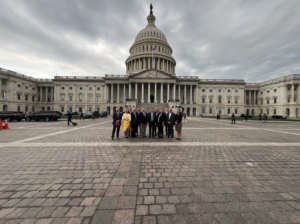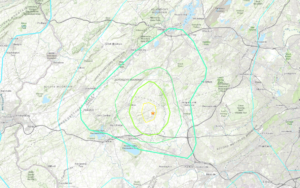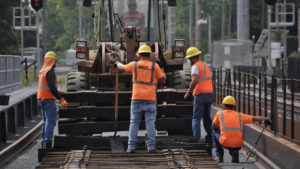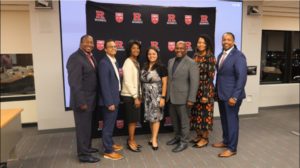County seeks signals at crossing near Hammond, Kan.
Written by jroodThe Bourbon County, Kan., Commissioners are working hard to get signals installed at a dangerous railroad crossing, The Fort Scott Tribune reports. Since earlier this summer, the commission has been working on getting signals installed at the railroad crossing on 225th Street, one-quarter of a mile south of Hammond.
The commission is seeking
to improve the crossing because it is difficult and dangerous for people
traveling north on 225th Street driving large vehicles and farm equipment to
look backward to see if a train is coming.
The commission was told
by the Kansas Department of Transportation that with their traffic count
number, the crossing does not meet the requirements to be placed on the
priority list. On Nov. 30, the commissioners wrote a letter to KDOT, state and
national leaders, and BNSF requesting that the crossing be moved up on the
priority list. The letter was accompanied with a new traffic count, which was
compiled by the county. According to the commission, the difference between
KDOT’s numbers and the county’s numbers was "significant."
KDOT Railroad Technician
Specialist Gary Farlow said there are about 5,000 railroad crossings in Kansas
and it is difficult to keep an accurate traffic count on them all. He said the
state conducts a 24-hour traffic study for each crossing every seven or eight
years.
Less than one week after
sending the letter Farlow called the county saying the traffic count numbers
had been updated and that the crossing still did not qualify for federal
funding. However, there was another option. This option would be an 80/20
matching grant between KDOT and BNSF that would come from a small project fund
within KDOT. According to Farlow, this program would only require the
commission to pass a resolution asking for the project. With a small fund to
draw from, Farlow said KDOT could only complete about two projects each year.
With the required
resolution signed Dec. 11, commissioners and Farlow will meet to take
measurements and photographs of the crossing to get the approval for the
funding. Farlow said it could be up to six months before an agreement is made
between KDOT, BNSF and the county. He said, if approved, BNSF has one year to
get the signals installed.
"It can be a lot
quicker than that, but that should be, I would hope, the worst-case scenario
giving any unforeseen things happening," Farlow said.
If approved, the signals
would be installed and maintained by BNSF, according to Farlow.
Without the use of the
KDOT funding program, it could be a few years before the crossing even makes it
onto the priority list. With communities developing and numbers constantly
changing, it is hard to determine how long it would be.
There is currently no
guarantee if the crossing will be addressed, but the commission is happy with
getting the issue some much-needed attention.





